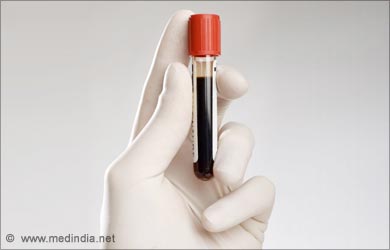Ampullary cancer is a relatively rare cancer arising from Ampulla of Vater. The ampulla of Vater is the part that connects the common bile duct and the pancreatic duct to the small intestine. It regulates the flow of pancreatic juice and bile into the intestine through contraction and relaxation of the sphincter of Oddi, the sphincter located at this junction. 
True ampullary cancers originate from the ampulla of Vater. Periampullary cancers, on the other hand, originate from the pancreas, bile duct, or intestines close to the ampulla of Vater. Some studies indicate that patients with ampullary cancers have a better survival rate than those with periampullary cancers.Genetic factors play a major role in the development of ampullary cancer. In addition, other factors like cigarette smoking and presence of certain diseases could increase the risk of ampullary cancer.

Most patients with ampullary cancer present with jaundice. The tumor obstructs the flow of pancreatic and biliary juices into the intestine. This results in the development of a type of jaundice called obstructive jaundice.The typical triad of clinical features that points to ampullary cancer includes persistent or intermittent jaundice, anemia and a palpable gall bladder. But these features may not be obvious in all patients.
Diagnosis of ampullary cancer is based on various tests like imaging studies, endoscopy and biopsy. The cancer is then staged to determine the prognosis of the patient. In some cases, the cancer is resectable, and the patients undergo surgery to remove the same. In other cases, the cancer may be difficult to remove due to its spread. In such cases, palliative procedures like stenting to relieve the obstruction may be performed.
What are the Causes Ampullary Cancer?
Genetic factors play a role in the development of ampullary cancer.
Genetic factors appear to play a role in the development of ampullary cancer.
• Patients with familial adenomatous polyposis have an increased risk of suffering from ampullary cancer. The incidence is higher in patients who have inflammatory bowel disease.
• Genetic alterations like K-ras mutations, mutations in tumor suppressor genes such as p53 DPC4/SMAD4, transforming growth factor-â-receptor-II (growth factor receptor TGF-âR-II) are associated with ampullary cancer. The altered growth factor receptor blocks the growth inhibitory action of TGF-â thereby promoting tumor growth.
• At the chromosomal level, loss of alleles of chromosome 17p and 18q are associated with ampullary cancer (55% and 36%).
Other factors like cigarette smoking and diabetes mellitus may be associated with ampullary cancer.
What are the Symptoms and Signs of Ampullary Cancer?
Symptoms of ampullary cancer occur due to obstruction to the flow of the pancreatic and biliary secretions into the intestine.
Symptoms and signs of ampullary cancer include:
• Intermittent or persistent jaundice
• Loss of appetite

• Weight loss• Anemia with or without symptoms of bleeding from the digestive tract

• Itching• Abdominal pain

• Nausea and vomiting• Acute pancreatitis
• Back pain, which may be a sign of advanced stage
• Fever
• Diarrhea, which may be due to lack of pancreatic enzymes in the gut to digest the food
• The gall bladder which stores bile may be distended and felt on examination. This sign is called the Courvoisier sign.
How can we Diagnose Ampullary Cancer?
Ampullary cancer is diagnosed using imaging techniques, endoscopy and biopsy.
Ampullary cancer is diagnosed based on patient history, physical examination, blood tests, endoscopy and non-invasive imaging studies.
Laboratory studies:
Blood tests include:
• Estimation of hemoglobin content which can detect anemia caused by bleeding from the digestive tract.

• Liver function tests which include serum bilirubin, amylase, alkaline phosphatase and amino transferase levels, and coagulation profile. The liver functions are affected in ampullary cancer.Urine Analysis:
• Urine tests indicate obstructive jaundice.
Tumor Markers:
• Tumor markers are certain substances released into the blood that indicate the presence of a particular tumor. There are no specific tumor markers for ampullary cancer, which could ascertain the presence of the cancer. However, carbohydrate antigen 19-9 (CA 19-9) may be elevated in ampullary cancer. Carcinoembryonic antigen (CEA) levels increase; however, it is elevated in other digestive tract cancers as well.
Imaging Studies:
• Ultrasound helps to rule out gallstones. Endoscopicultrasonography (EUS) is found to be more sensitive tool for diagnosis and staging of ampullary cancer and can identify tumors less than 1 cm size.
• CT scans may not be able to diagnose small ampullary lesions, but can identify signs in the region around the ampulla that may be associated with the cancer.

• MRI with magnetic resonance cholangiopancreatography is among the most sensitive imaging tests used to detect ampullary cancer.• Chest x-ray helps to detect any spread to the lungs.
Endoscopic Procedures:
• Endoscopy can be used to directly visualize the cancer and obtain a biopsy sample.
How can Ampullary Cancer be Treated?
Surgery is the primary treatment for ampullary cancer. Advanced cases may be treated with stents and palliative treatment.
Treatment of ampullary cancer is based on the size and stage of the tumor. Treatment includes the following:
• If ampullary tumor is large in size or has spread, Whipple procedure is carried out. In this procedure, the lower half of the stomach, gallbladder, distal common bile duct, head of the pancreas, the upper parts of the small intestines and regional lymph nodes are removed. The remaining part of the stomach, biliary tree, and pancreas are attached to the cut end of the small intestine.
• Biliary stents may be placed endoscopically or through a skin incision to relieve the jaundice caused due to obstruction following the cancer.
• The benefits of chemotherapy and radiotherapy in the treatment of this cancer have not been established.
No comments:
Post a Comment